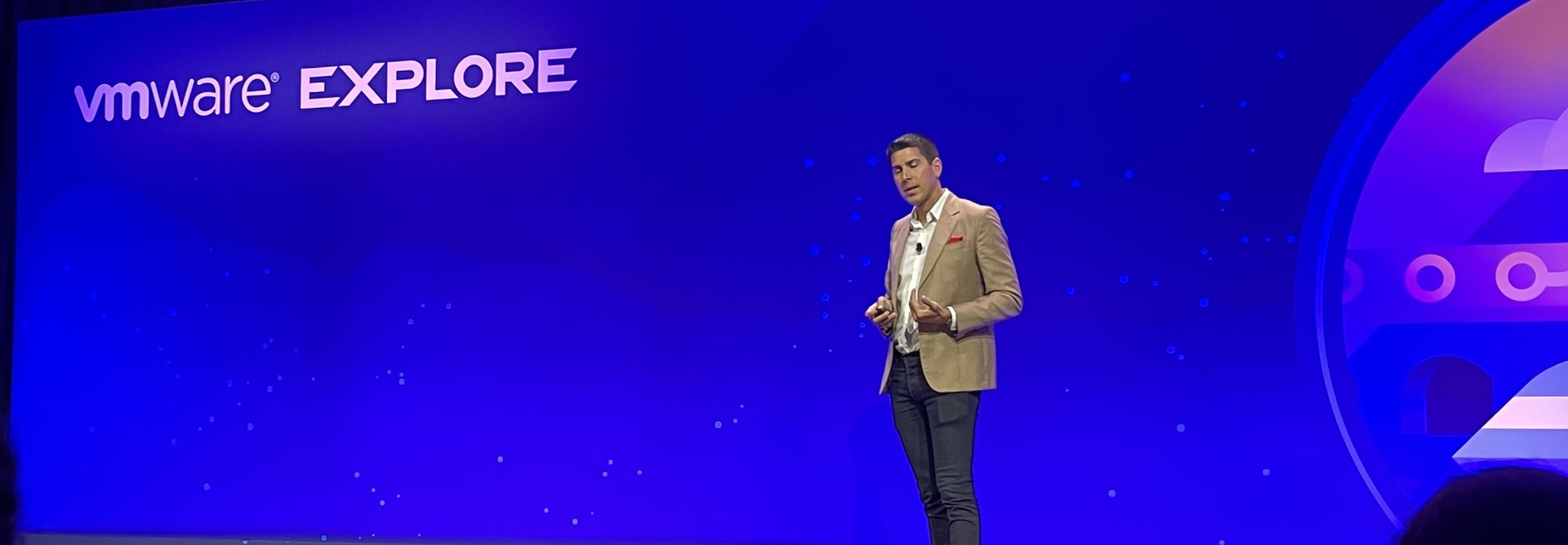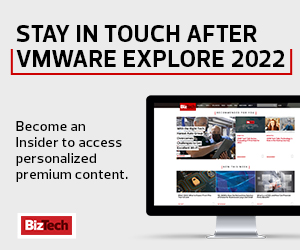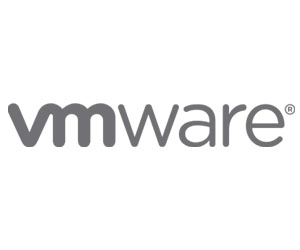Innovating Beyond Core Technology to Meet Business Needs
Colbert stressed that VMware is listening to its customers and attempting to drive innovation that will meet their needs. “As we see these digital transformation initiatives, these cloud initiatives, application modernization initiatives, what we find from a survey that we did just recently is that almost half of the customers and businesses that we surveyed are trying to do all three of these things at once: cloud migration, multicloud management and cognitive application development.”
“The reality is that the expectations on IT teams, on technical teams, are growing larger than ever. And I think that’s because the business needs are driving that,” he said. “We need to interact digitally, we need to be able to move quicker.”
Colbert encouraged IT leaders to view innovation through a broader lens. “It’s not just some core, really hard technology, like, let’s say, a hypervisor,” he said. “Instead, it’s also things like, how do you actually consume it, this notion of adoptability. You look at things like VMware Cloud Foundation, and the whole premise of that is how we deliver that technology, how you get compute, storage and networking, virtualization and automation.”
EXPLORE: See how VMWare's solutions can simplify data access, sharing, and security.
Other opportunities for innovation exist with trust, security and sovereignty, and Colbert singled out environmental, social, and governance initiatives as an area ripe for innovation. “You used to have this term called corporate social responsibility. And that term was kind of about doing good for the world, being nice and giving back and all that stuff. It was a generosity,” Colbert said.
The key difference with ESG initiatives, Colbert said, is that these efforts aren’t just about doing the “right” thing: “I mean, yes, it is good for the world. But it’s actually a business imperative. I'm hearing from more and more customers who have sustainability requirements coming from their board, coming from investors, their supply chains. We’re seeing more and more around this.”
Should Your Organization Be Leveraging Blockchain and Web3?
In a separate session, Colbert joined Chainalysis Chief Product Officer Pratima Arora in a conversation moderated by CBS Sunday Morning correspondent and former New York Times technology columnist David Pogue. The three traded thoughts on Web3’s potential.
Pogue began by saying a central problem is that no one really knows what Web3 is. He offered several possible definitions for Web3, such as “the internet owned by the builders and users.”
“Critics believe that Web3 is little more than a rebranding effort for crypto with the aim of shedding some of the industry's cultural political baggage,” he said. “Others believe it’s a dystopian vision of a pay-to-play internet, in which every activity and social interaction becomes a financial instrument to be bought and sold.”














